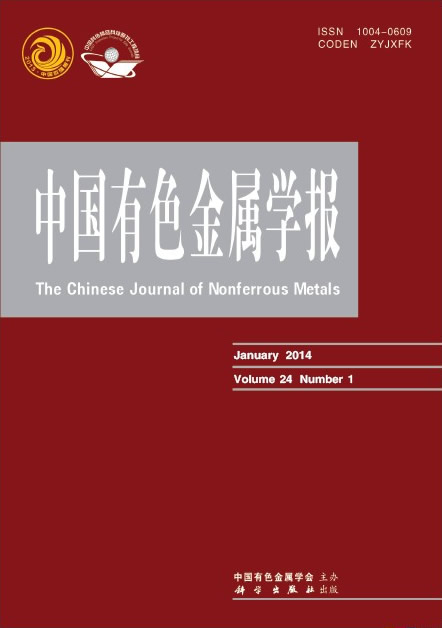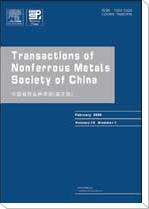中国有色金属学报(英文版)
Transactions of Nonferrous Metals Society of China
| Vol. 35 No. 9 September 2025 |
(1. State Key Laboratory for Advanced Metals and Materials, University of Science and Technology Beijing, Beijing 100083, China;
2. Branch of Vanadium and Titanium Research Institute, Ansteel Beijing Research Institute Co., LTD., Beijing 102209, China)
Abstract:High Nb β/γ-TiAl (HNBG) intermetallics and Ni-based superalloy (IN718) were diffusion-bonded using pure Ti foil interlayer under pulse current. The microstructure, element segregation, and mechanical properties of HNBG/Ti/IN718 joint were investigated. The effect of Ti interlayer on microstructure and mechanical properties of the joint was discussed. The typical microstructure of HNBG/Ti/IN718 joint was HNBG//β/B2, τ3-NiAl3Ti2//α2-Ti3Al// α-Ti+δ-NiTi2, β-Ti//δ-NiTi2//β2-(Ni,Fe)Ti//Cr/Fe-rich η-Ni3Ti, η-Ni3Ti, α-Cr, δ-Ni3Nb//η-Ni3Ti, γ-Ni, δ-Ni3Nb//IN718. The gaps and Kirkendall voids exhibited a gradual disappearance with increasing bonding temperature. The mechanism of Cr, Fe and Nb elements segregation was that NiTi phase hindered the diffusion of them. The nano-indentation results demonstrated that diffusion zones on IN718 alloy side had higher hardness. The maximum shear strength of the joint (326 MPa) was achieved at bonding parameters of 850 °C, 20 min and 10 MPa. The fracture occurred in Zones IV and V, and the fracture modes were brittle fracture and cleavage fracture. The introduction of Ti interlayer resulted in improved microstructure and enhanced bonding strength of the joint.
Key words: high niobium β/γ-TiAl intermetallics; IN718 alloy; Ti interlayer; diffusion bonding; microstructure; mechanical properties; element segregation


